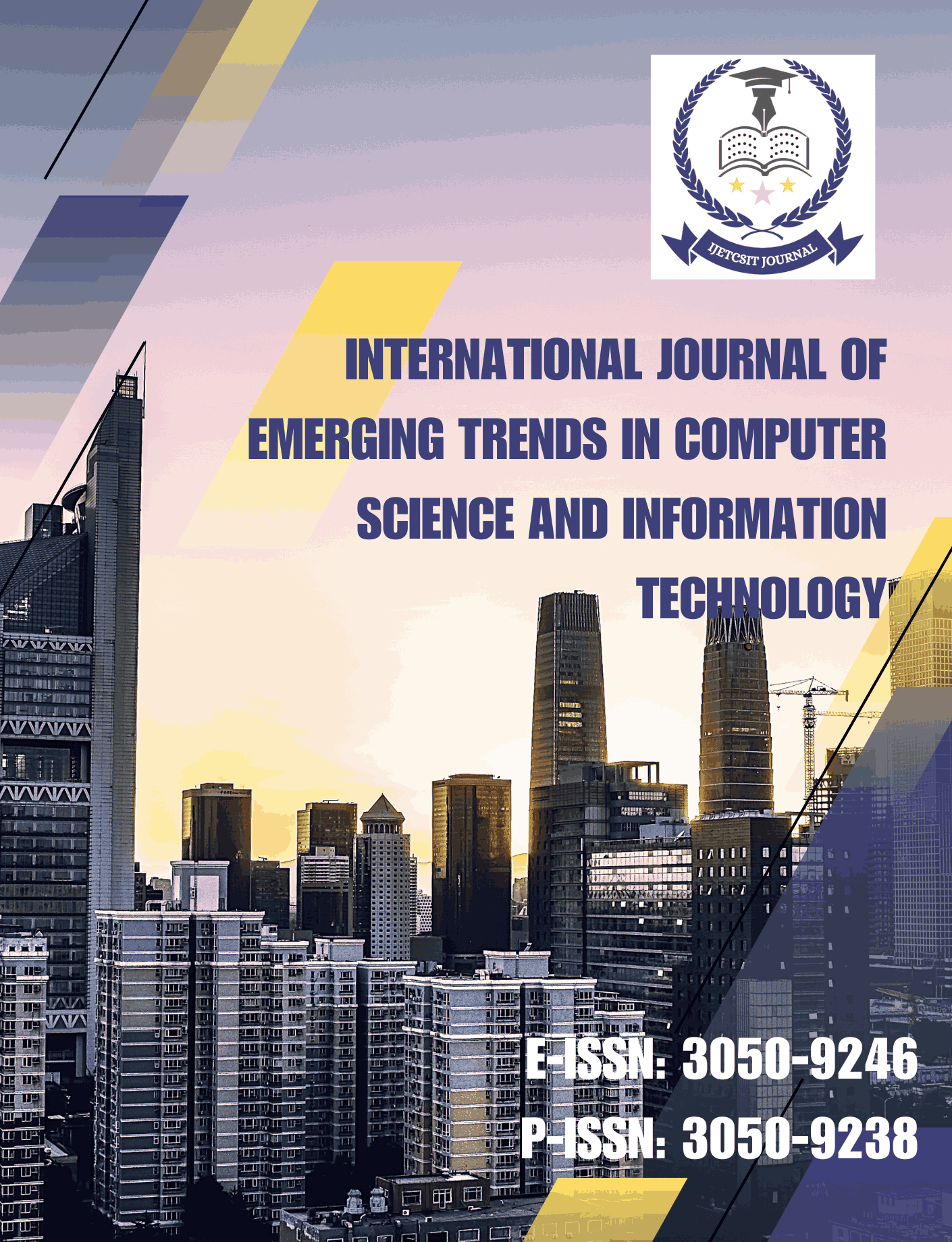Self-Driving Databases
DOI:
https://doi.org/10.63282/3050-9246.IJETCSIT-V2I1P10Keywords:
Self-driving Databases, Autonomous Data Management, Machine Learning, Cloud Computing, Database Optimization, Data AutomationAbstract
The geometric increase in data volume and complexity has completely made manual database management progressively unfeasible with the imperative moving toward fully autonomous, self-institutionalized data management systems. Self-driving databases are disruptive technology of desktop database technology, merging artificial intelligence (AI) and machine learning (ML) to reach round-the-clock monitoring, tuning and repair automation. The present paper is a framework of designing and operating self-driving databases utilizing predictive analytics, reinforcement learning, and control-theoretic feedback to achieve the optimal query execution, resource allocation, and fault recovery in any given time. The suggested architecture assigns an autonomic control model in the shape of a closed loop consisting of monitoring and analysis, planning and execution modules accompanied by a common body of knowledge to support adaptive decision-making. The experimental assessments indicate that workload can now be optimized efficiently, latency can now be reduced, and systems can be resiliently implemented in comparison to the traditional rule-based and semi-automated system. In addition to automatising operations, this paper illustrates the consequences of self-driving databases in cloud-native solutions, data governance, sustainable computing. It is possible the results indicate that AI-based data management has a significant potential to lower the administrative burden, increase the level of reliability, and correct the path towards entirely autonomous, explicable, and resistant data ecosystems
Downloads
References
[1] Helskyaho, H., Yu, J., & Yu, K. (2021). Oracle Autonomous Database for Machine Learning. In Machine Learning for Oracle Database Professionals: Deploying Model-Driven Applications and Automation Pipelines (pp. 97-133). Berkeley, CA: Apress.
[2] Bacon, D. F., Bales, N., Bruno, N., Cooper, B. F., Dickinson, A., Fikes, A., ... & Woodford, D. (2017, May). Spanner: Becoming a SQL system. In Proceedings of the 2017 ACM International Conference on Management of Data (pp. 331-343).
[3] Li, G., Zhou, X., Li, S., & Gao, B. (2019). Qtune: A query-aware database tuning system with deep reinforcement learning. Proceedings of the VLDB Endowment, 12(12), 2118-2130.
[4] Gur, Y., Yang, D., Stalschus, F., & Reinwald, B. (2021, March). Adaptive Multi-Model Reinforcement Learning for Online Database Tuning. In EDBT (pp. 439-444).
[5] Wang, J., Trummer, I., & Basu, D. (2021). UDO: universal database optimization using reinforcement learning. arXiv preprint arXiv:2104.01744.
[6] Dayan, P., & Hinton, G. E. (1997). Using expectation-maximization for reinforcement learning. Neural Computation, 9(2), 271-278.
[7] Pavlo, A., Angulo, G., Arulraj, J., Lin, H., Lin, J., Ma, L., ... & Zhang, T. (2017, January). Self-Driving Database Management Systems. In CIDR (Vol. 4, p. 1).
[8] Kossmann, J., & Schlosser, R. (2020). Self-driving database systems: a conceptual approach. Distributed and Parallel Databases, 38(4), 795-817.
[9] Fu, J., Kumar, A., Nachum, O., Tucker, G., & Levine, S. (2020). D4rl: Datasets for deep data-driven reinforcement learning. arXiv preprint arXiv:2004.07219.
[10] Sharma, A., Schuhknecht, F. M., & Dittrich, J. (2018). The case for automatic database administration using deep reinforcement learning. arXiv preprint arXiv:1801.05643.
[11] Bychkov, I. V., Hmelnov, A. E., Fereferov, E. S., Rugnikov, G. M., & Gachenko, A. S. (2018, August). Methods and tools for automation of development of information systems using specifications of database applications. In 2018 3rd Russian-Pacific Conference on Computer Technology and Applications (RPC) (pp. 1-6). IEEE.
[12] Kosińska, J., & Zieliński, K. (2020). Autonomic management framework for cloud-native applications. Journal of Grid Computing, 18(4), 779-796.
[13] Behere, S., & Törngren, M. (2015, May). A functional architecture for autonomous driving. In Proceedings of the first international workshop on automotive software architecture (pp. 3-10).
[14] Sviatov, K., Yarushkina, N., Kanin, D., Rubtcov, I., Jitkov, R., Mikhailov, V., & Kanin, P. (2021). Functional model of a self-driving car control system. Technologies, 9(4), 100.
[15] Ma, L., Van Aken, D., Hefny, A., Mezerhane, G., Pavlo, A., & Gordon, G. J. (2018, May). Query-based workload forecasting for self-driving database management systems. In Proceedings of the 2018 International Conference on Management of Data (pp. 631-645).
[16] Lipu, M. H., Miah, M. S., Hannan, M. A., Hussain, A., Sarker, M. R., Ayob, A., ... & Mahmud, M. S. (2021). Artificial intelligence based hybrid forecasting approaches for wind power generation: Progress, challenges and prospects. IEEE Access, 9, 102460-102489.
[17] Pavlo, A., Butrovich, M., Ma, L., Menon, P., Lim, W. S., Van Aken, D., & Zhang, W. (2021). Make your database system dream of electric sheep: towards self-driving operation. Proceedings of the VLDB Endowment, 14(12), 3211-3221.
[18] Preuveneers, D., Tsingenopoulos, I., & Joosen, W. (2020). Resource usage and performance trade-offs for machine learning models in smart environments. Sensors, 20(4), 1176.
[19] Hoffmann, G. A., Trivedi, K. S., & Malek, M. (2007). A best practice guide to resource forecasting for computing systems. IEEE Transactions on Reliability, 56(4), 615-628.
[20] da Rosa Righi, R., Lehmann, M., Gomes, M. M., Nobre, J. C., da Costa, C. A., Rigo, S. J., ... & de Oliveira, L. R. B. (2019). A survey on global management view: toward combining system monitoring, resource management, and load prediction. Journal of Grid Computing, 17(3), 473-502.





